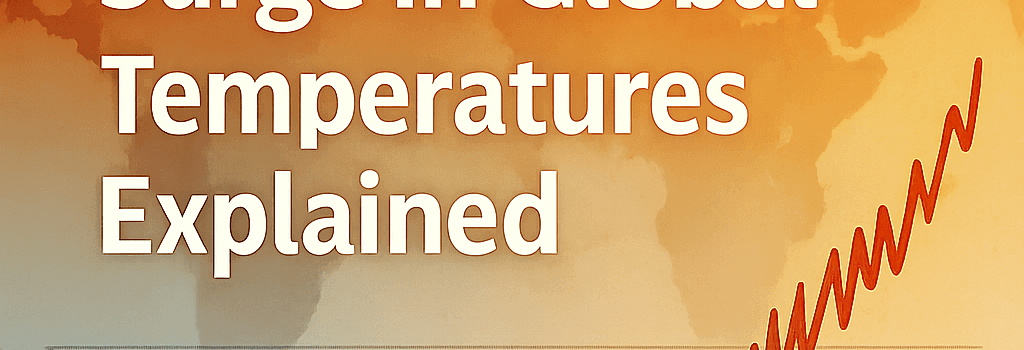Ars Live: Surge in Global Temperatures Explained

Climate records continue to tumble as global surface temperatures hit unprecedented highs. Join Zeke Hausfather, lead researcher at Berkeley Earth, on Thursday, June 26 at 1 pm ET for an in-depth discussion of the data, methodologies, and climate drivers behind this alarming trend.
Tracking the Temps: Berkeley Earth’s Role
Founded in 2010 by physicist Richard A. Muller, Berkeley Earth was created to provide an independent evaluation of global temperature records. The project has since aggregated over 1.5 billion observations from ~40,000 meteorological stations, supplemented by sea-surface temperatures (SSTs) from buoys and ships. Using a state-of-the-art kriging interpolation and rigorous uncertainty quantification, Berkeley Earth delivers monthly global mean surface temperature (GMST) anomalies with ±0.05 °C confidence intervals, comparable to NASA GISS and NOAA analyses.
Methodologies for Temperature Monitoring
To build a complete picture of Earth’s thermal evolution, scientists integrate multiple data streams:
- Land stations: Automated and manual readings, homogenized to remove station moves and instrument changes.
- Ocean buoys & ships: Satellite-calibrated SST measurements at 0.25° resolution.
- Satellite retrievals: Infrared and microwave sounders (e.g., AIRS, AMSU) feeding into reanalysis products like ERA5.
- Ensemble averaging: CMIP6 model hindcasts for bias correction and trend attribution.
Drivers Behind the Record Heat
Multiple factors have combined to push temperatures to new highs:
- Anthropogenic greenhouse gases: CO₂ levels have surpassed 419 ppm, up from 280 ppm pre-industrial, intensifying radiative forcing by ~2.4 W/m² since 1750.
- El Niño amplification: The strong 2023–24 event contributed ~0.15 °C above trend by enhancing tropical Pacific SSTs.
- Feedback loops: Arctic sea-ice loss (–12% per decade) and expanded water-vapor concentrations (up 1.3% per decade) accelerate warming.
Implications for Climate Targets and Tipping Points
At current warming rates (~1.2 °C above pre-industrial baselines), the 1.5 °C guardrail set by the Paris Agreement is likely to be breached within the next decade under SSP2-4.5 and SSP5-8.5 scenarios. Key tipping points at risk include:
- Greenland Ice Sheet mass balance: Loss has accelerated to ~269 Gt/yr.
- Permafrost carbon feedback: Thawing releases an estimated 0.4 Gt C/yr, amplifying CO₂ concentrations.
- Amazon dieback: Drought-induced tree mortality rose 6% over the last decade.
Looking Ahead: Projections and Risks
CMIP6 ensemble projections suggest global mean temperatures could rise by 2.0–3.5 °C by 2100 under high-emission pathways. Even with aggressive mitigation (SSP1-2.6), stabilizing at 1.8 °C requires rapid decarbonization and negative-emission technologies. The latest IPCC AR6 Working Group I report underscores the narrowing window for action: emissions must peak before 2025 to hold warming near 1.5 °C.
Join the Live Discussion
Bring your questions for Zeke Hausfather—from data processing to policy implications. Whether you’re curious about regional heatwaves or the next big climate feedback, Zeke will provide expert insights and point you to the latest peer-reviewed studies.
Event Details
John Timmer
Senior Science Editor, Ars Technica. Ph.D. Molecular & Cell Biology, UC Berkeley. When not dissecting data, he’s on his bike or hiking.